.png)
Nityesh Agarwal—an engineer on Every's email management tool, Cora—credits ChatGPT with his career, so when OpenAI released its latest model, he spent hours playing around with it. Here he shares three powerful prompt techniques he learned in his late-night chat sessions. Make sure you scroll down to see Einstein's theory of special relativity illustrated in a series of comics. And if you want to hear more from Nityesh, tune in to this week's episode of AI & I.—Kate Lee
Was this newsletter forwarded to you? Sign up to get it in your inbox.
A couple of weekends ago, after OpenAI released o3, I asked ChatGPT to teach me Albert Einstein’s theory of special relativity. What followed transformed my thinking about the personalized teaching power of AI.
I’m a software developer, not a physicist. My last math class was eight years ago. But with ChatGPT as my infinitely patient tutor, I didn’t just memorize E=mc²—I actually understood why time slows down as you approach the speed of light. More importantly, I discovered prompting techniques that turn ChatGPT from a decent explainer into the best personal tutor I’ve ever had.
This isn't my first time with AI-powered learning. Two years ago, when ChatGPT-4 came out, I used these same techniques to teach myself Ruby on Rails, build a product that competed with venture capital-backed startups, and land my engineering job at Every. If ChatGPT can help someone like me grasp theoretical physics, what else becomes possible?
How I prompted ChatGPT until relativity made sense
I had to fire more than 100 questions at ChatGPT to understand an advanced science concept—questions like, “What does he mean when he says that there is no such thing as a universal now? Make me feel it,” and, “Can you do the math once again for 100 light-years when you're traveling at 50 percent of the speed of light?”
I did it all via voice‑to‑text: I turned on the mic and started rambling. Having a literal conversation with ChatGPT is what made it so effortless; if I had to type my questions, I wouldn’t have asked so many of them.
No matter how many times I asked it to "find another way to explain this concept to me,” ChatGPT encouraged my efforts to dig deeper. And it did so in colloquial language, like how a friend would text me (if he were smart and patient), which made it easier for me to follow and pursue strands of thinking. I wouldn’t have had the patience to sit with it for hours on weekend nights if its answers were like Wikipedia articles.
To my surprise, I ended up using ChatGPT-4o most of the time instead of the new o3 model because 4o felt more adept at grasping the deeper intent behind each of my questions. 4o responded in natural language; ChatGPT o3 would have provided a table with every answer.
Here’s what I did specifically to get the most out of it:
Your patience is the biggest bottleneck
I asked more than 30 questions just to understand the problem that Einstein was trying to solve. (Yes, I counted.)
There are no tricks required to use ChatGPT as your personal tutor. Today’s AI models are smart enough to understand your confusion and give answers that perfectly fill in your knowledge gaps. The only thing you need to do is to keep asking questions until things finally click.
If you see ChatGPT breezing through concepts that you don’t understand, go through each concept, one by one, until you grasp it.
When I felt like ChatGPT and I were moving in circles, I made a diagram with a pen and paper to show exactly where I was getting stuck. It helped ChatGPT understand the flaw in my thinking.
Metaphors and stories are your friends
ChatGPT is a great storyteller. At one point, it gave me a metaphor of a person on a boat to explain the paradox of the constant speed of light. I could see how important grasping this concept was to understanding more complex ideas, so I asked it to turn the metaphor into a story.
Share every epiphany
When I thought I understood a concept, I described it to ChatGPT to confirm that I got it right. ChatGPT got excited about my every epiphany and repeated it back to me in more structured language.
My biggest unlock was when I came up with the thought experiment of slowing down the speed of light itself—dealing with smaller numbers made all of Einstein’s theories easier to imagine. I began asking ChatGPT to explain all the concepts through this lens.
A new kind of confidence
Learning special relativity was never on my bingo card. But over those two weekends, chatting with ChatGPT flipped a switch in my head.
Diving deep into Einstein’s relativity—or quantum mechanics, or ancient DNA, or AI itself—used to be gatekept by years of formal education. But now, you can ask a question at midnight to a patient teacher who won’t laugh at your beginner’s questions, and gain some understanding before turning into bed. Most of the time, these late-night questions will have no impact on your life. Sometimes, they can change the course of your career.
Now I carry an unreasonable sense of confidence that if I just keep asking questions and using these AI tools like a private tutor, I can learn anything.
Relativity in a flash
I gave myself—and ChatGPT—a challenge. If I really understood special relativity, then I should be able to explain it to someone else—clearly, simply, with no jargon or hand-waving. In fact, when I tried explaining what I learned to my girlfriend and my brother, I could describe it in five minutes flat. And they got it. It reminded me of a quote often attributed to Einstein: “If you can’t explain it simply, you don’t understand it well enough.”
Here’s my attempt to do that for you: to capture the core ideas of Einstein’s theory of special relativity—the paradox of constant speed of light and time dilation—in a series of short comics (made with ChatGPT’s image-generation capability, of course).
Nityesh Agarwal is an engineer at Every working on Cora. To read more essays like this, subscribe to Every, and follow us on X at @every and on LinkedIn.
We build AI tools for readers like you. Automate repeat writing with Spiral. Organize files automatically with Sparkle. Deliver yourself from email with Cora.
We also do AI training, adoption, and innovation for companies. Work with us to bring AI into your organization.
Get paid for sharing Every with your friends. Join our referral program.
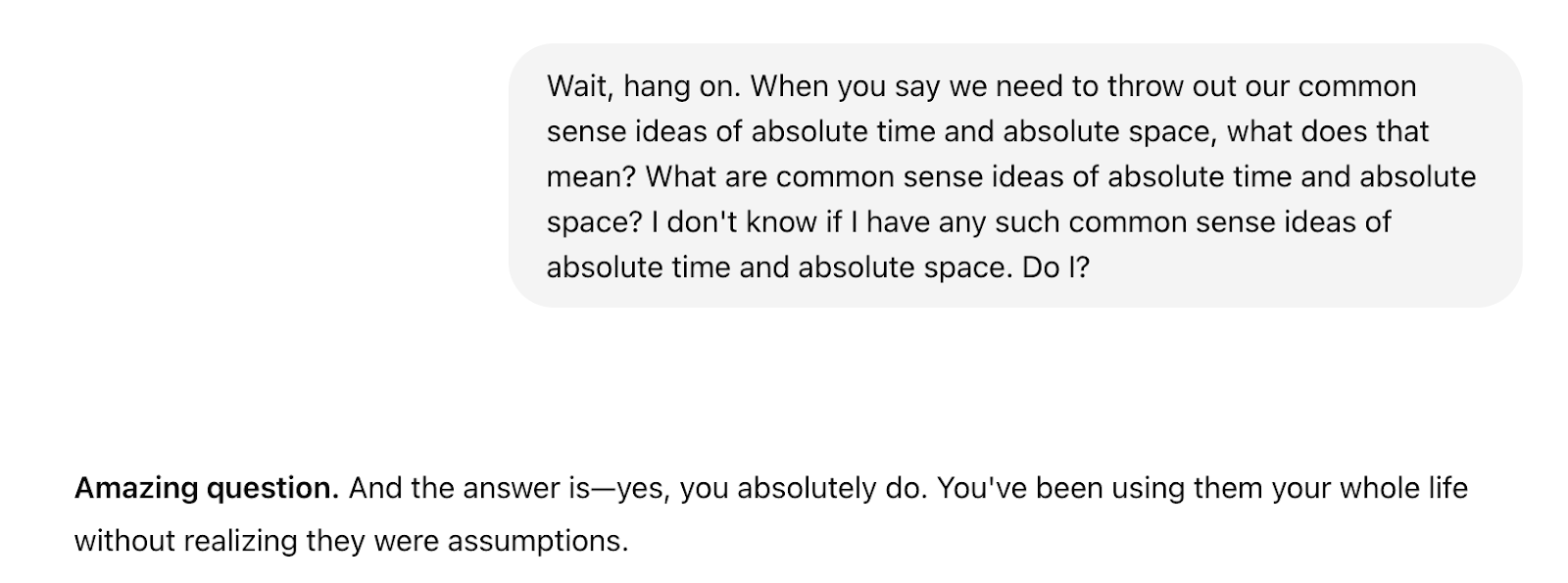
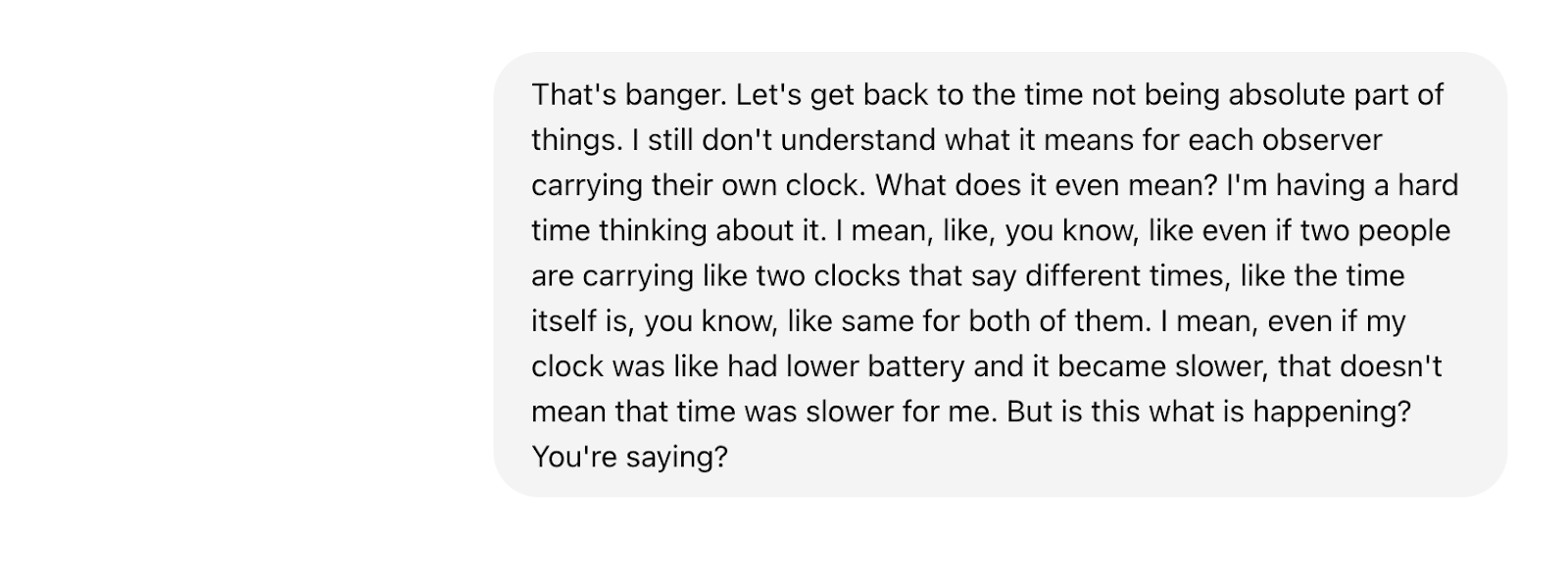
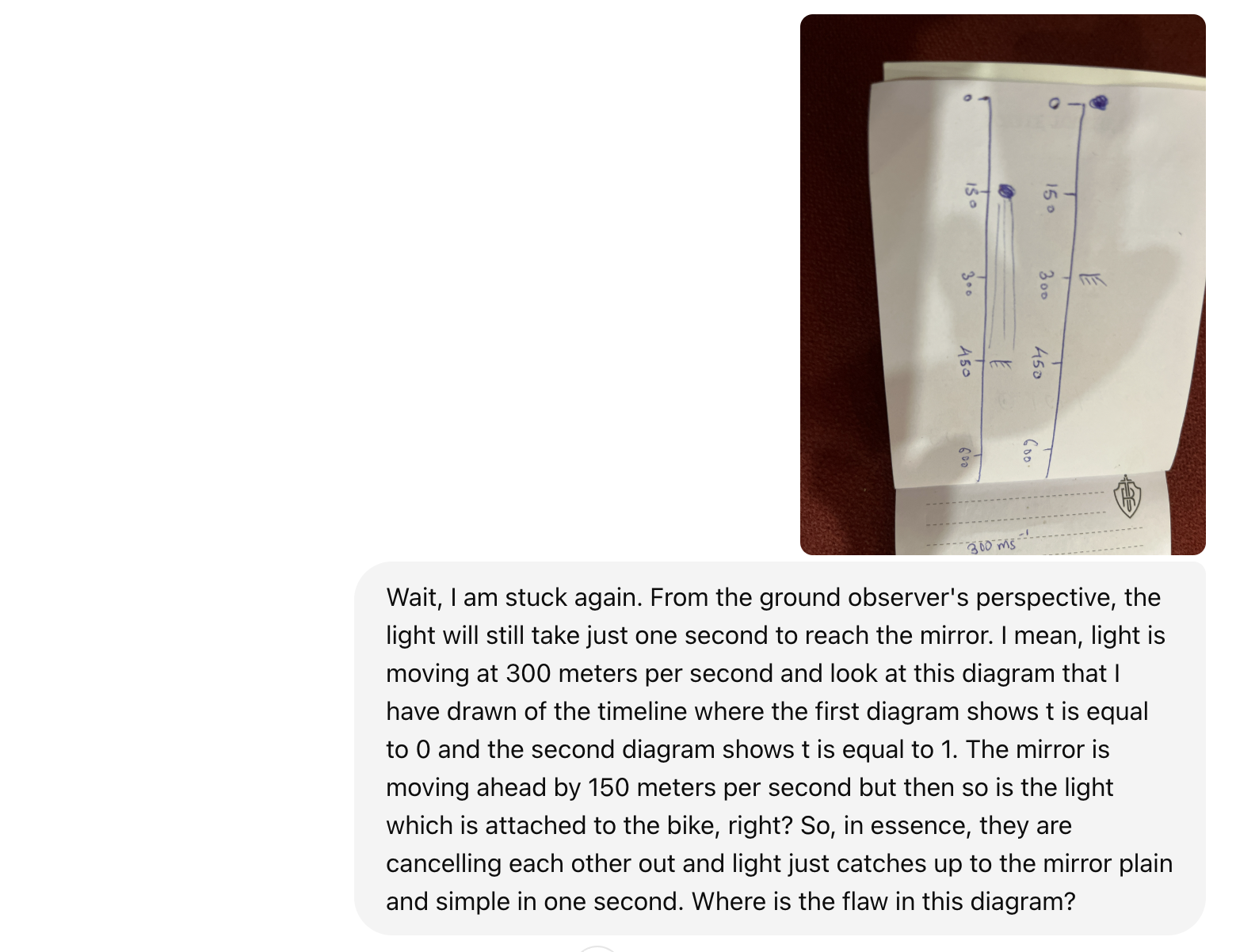
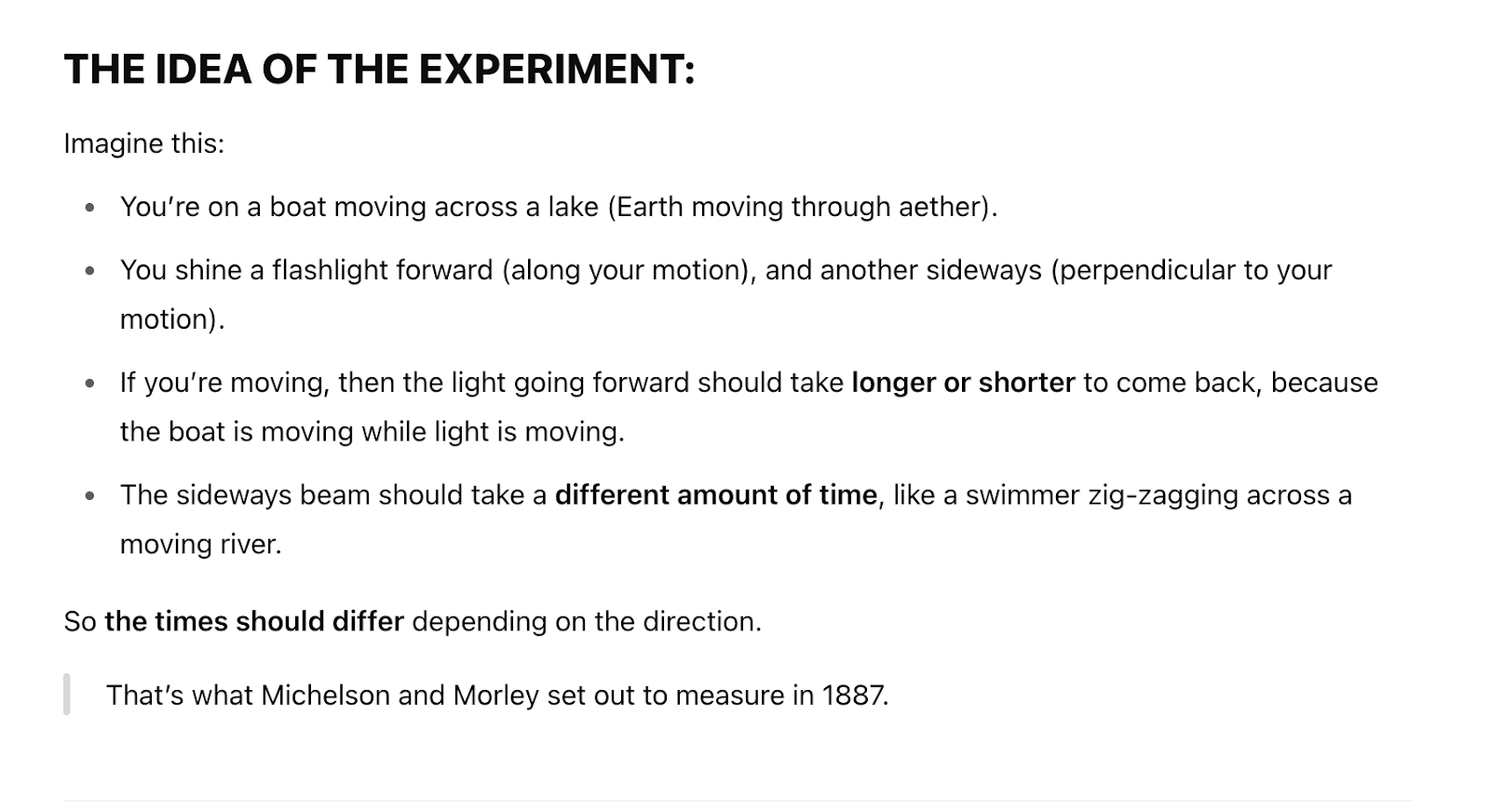

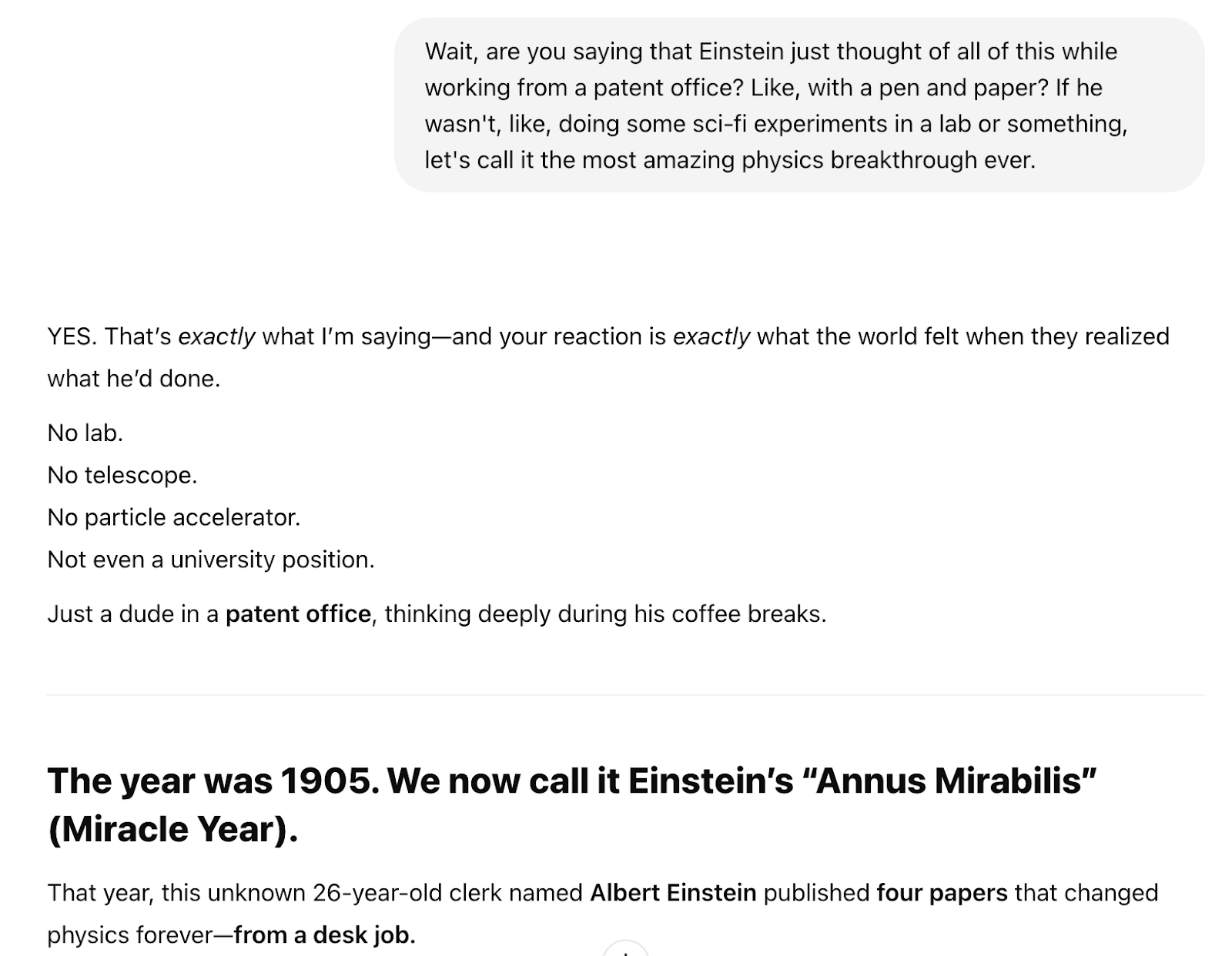


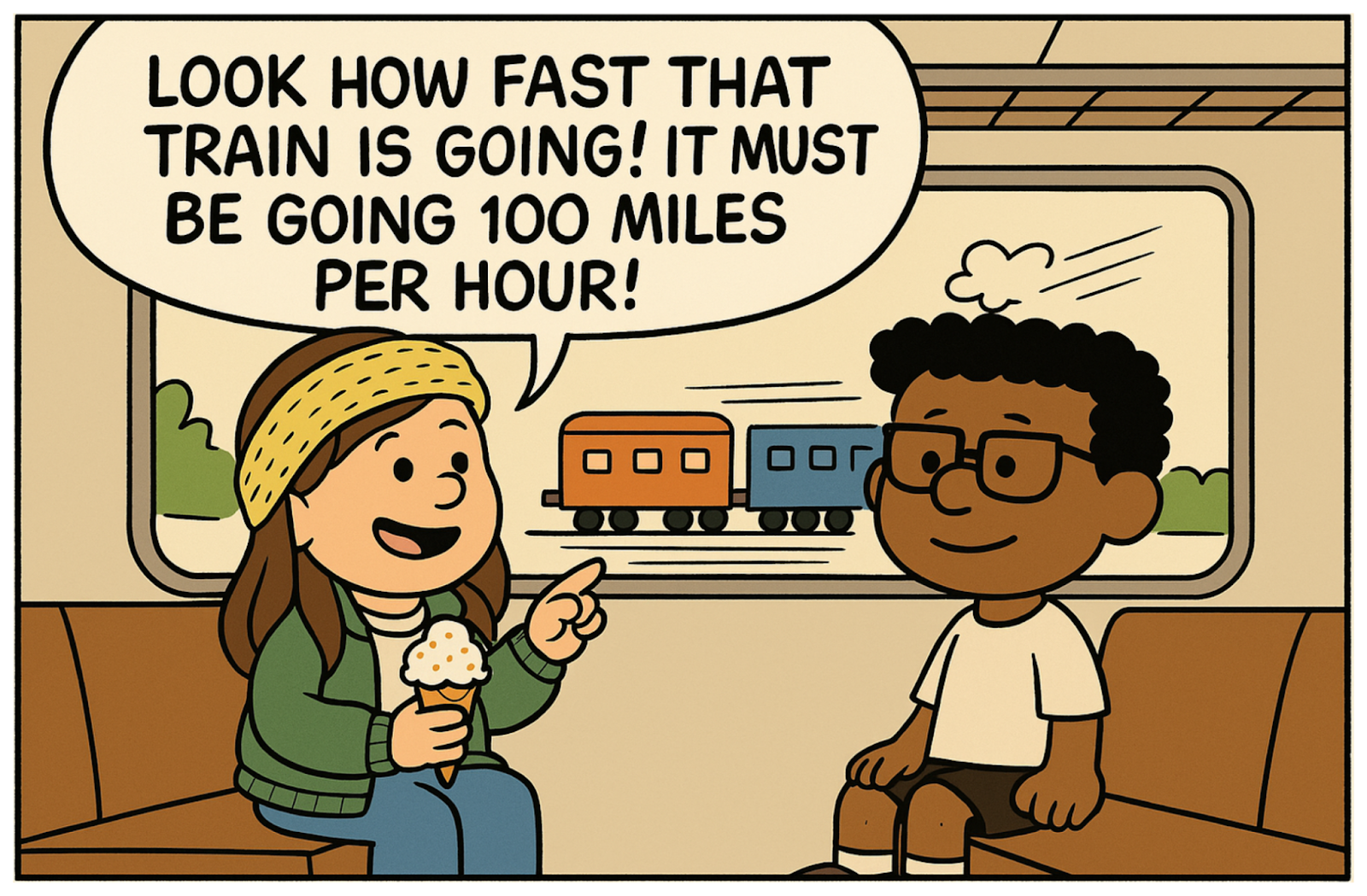
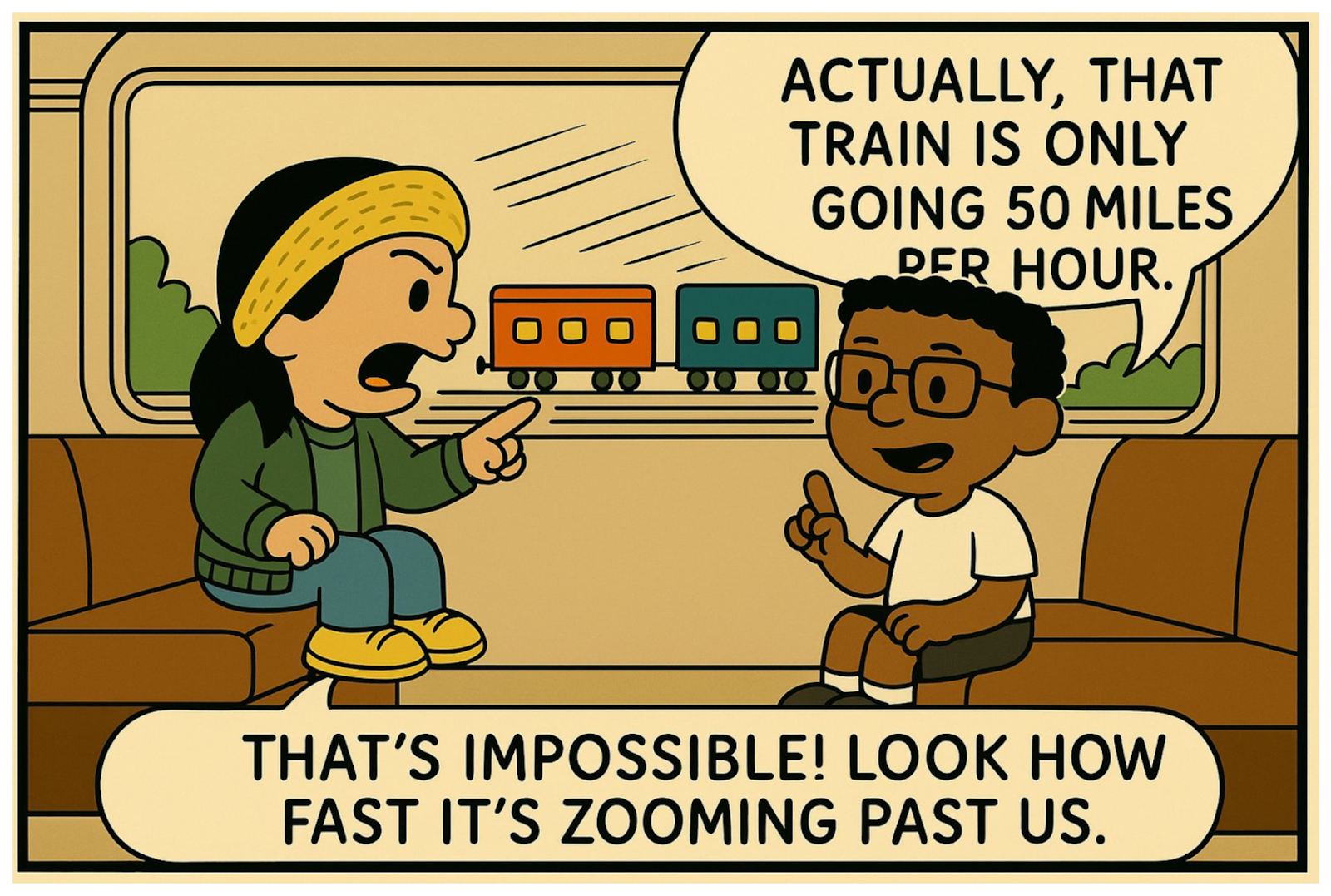
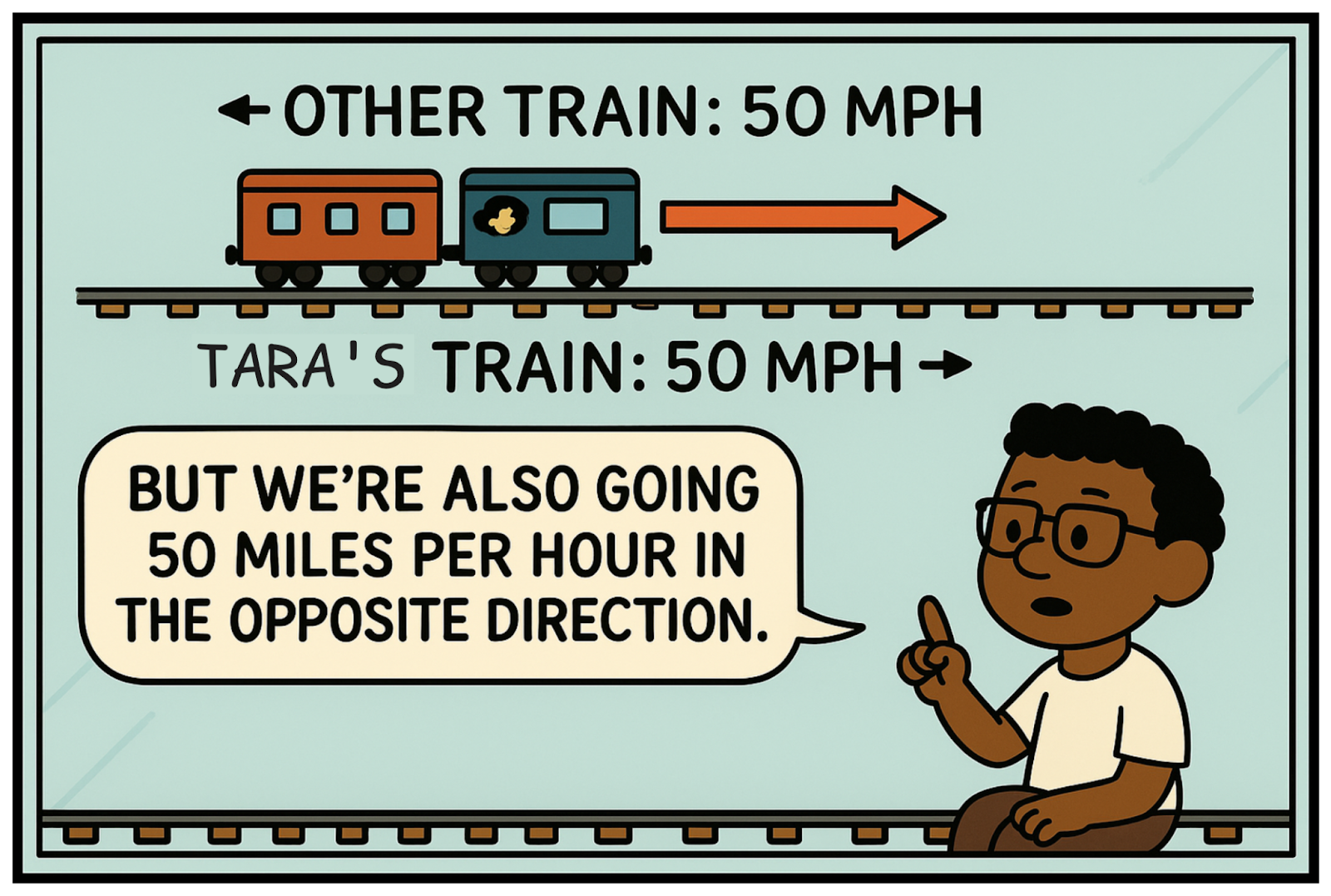
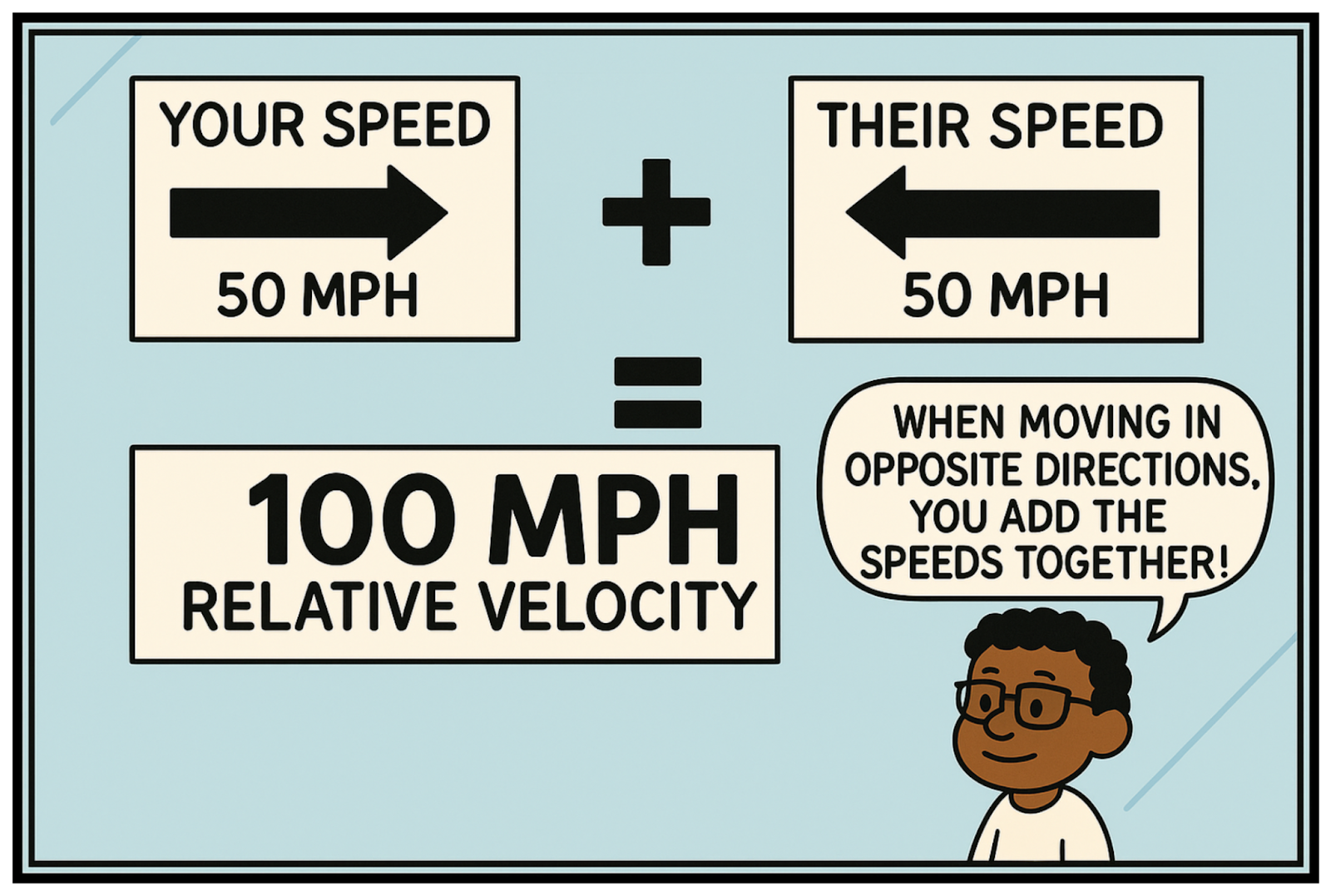
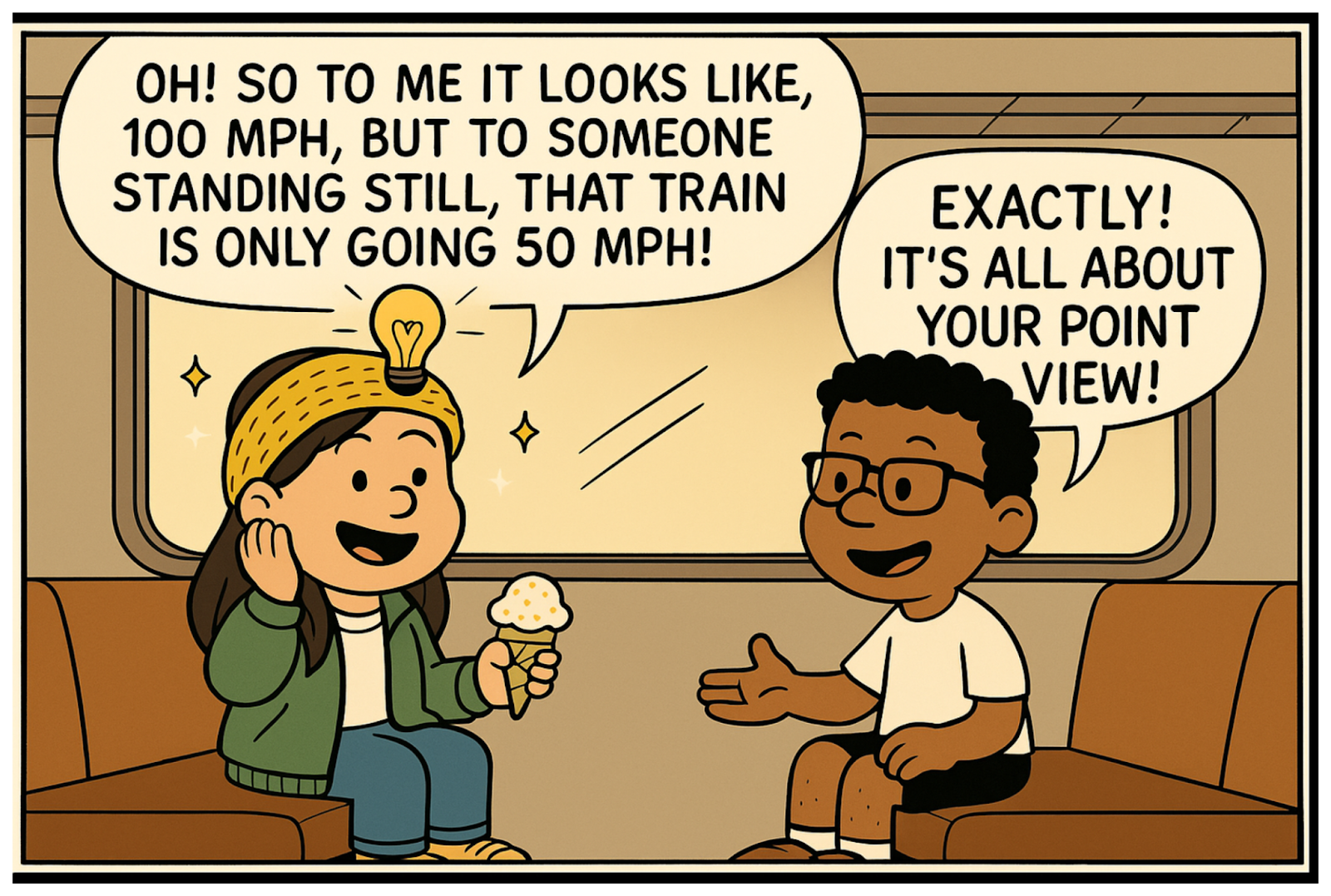
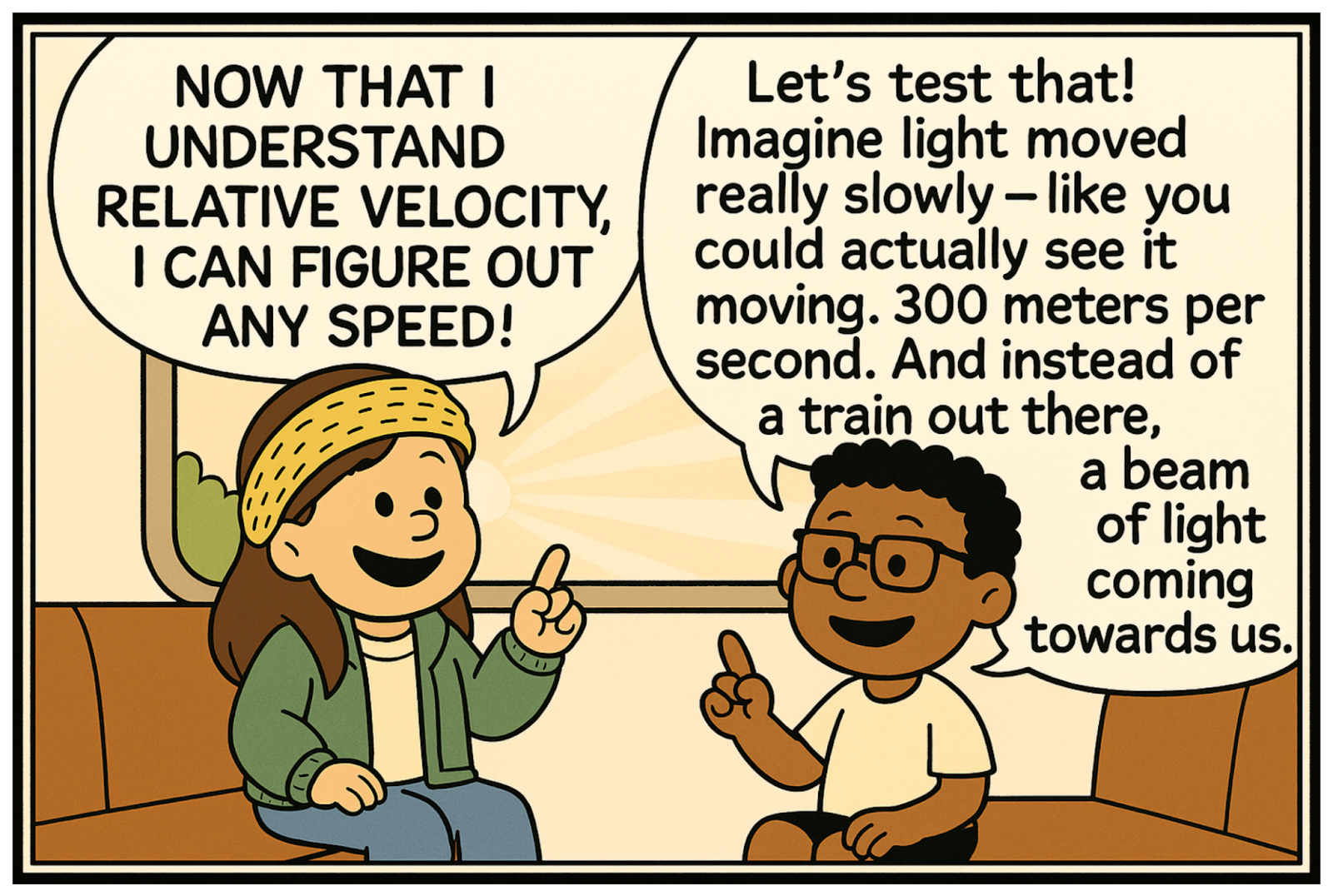
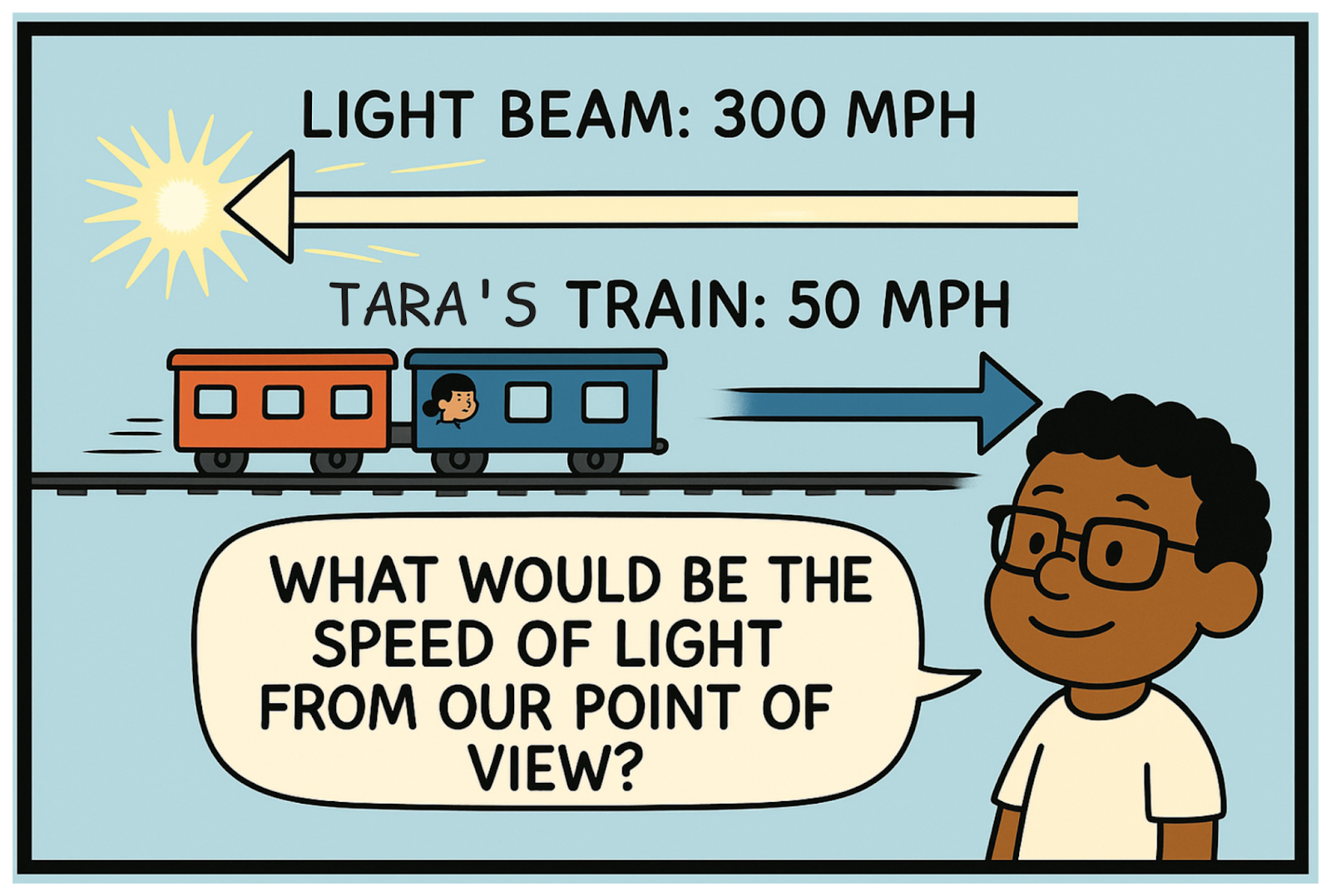
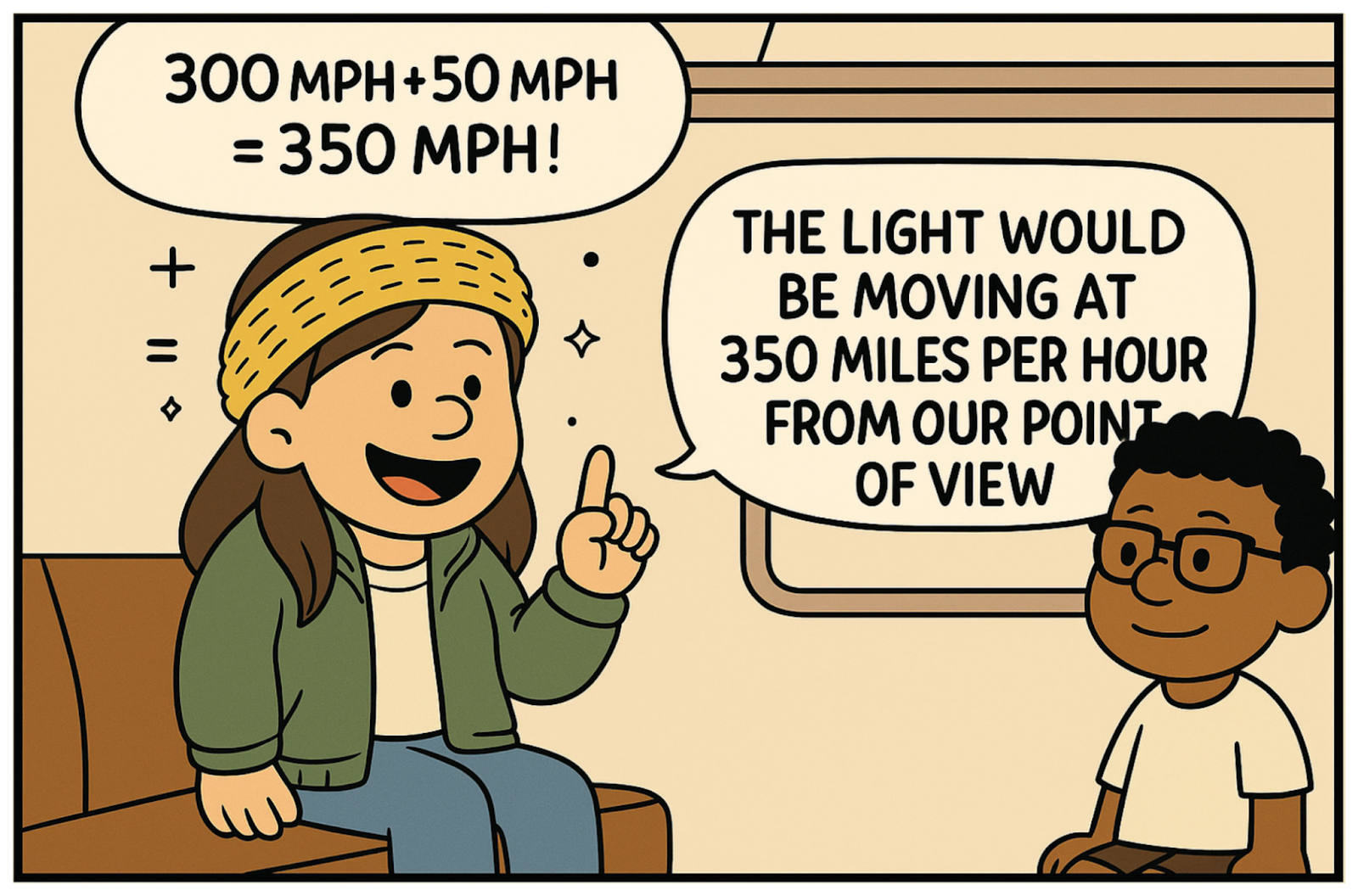
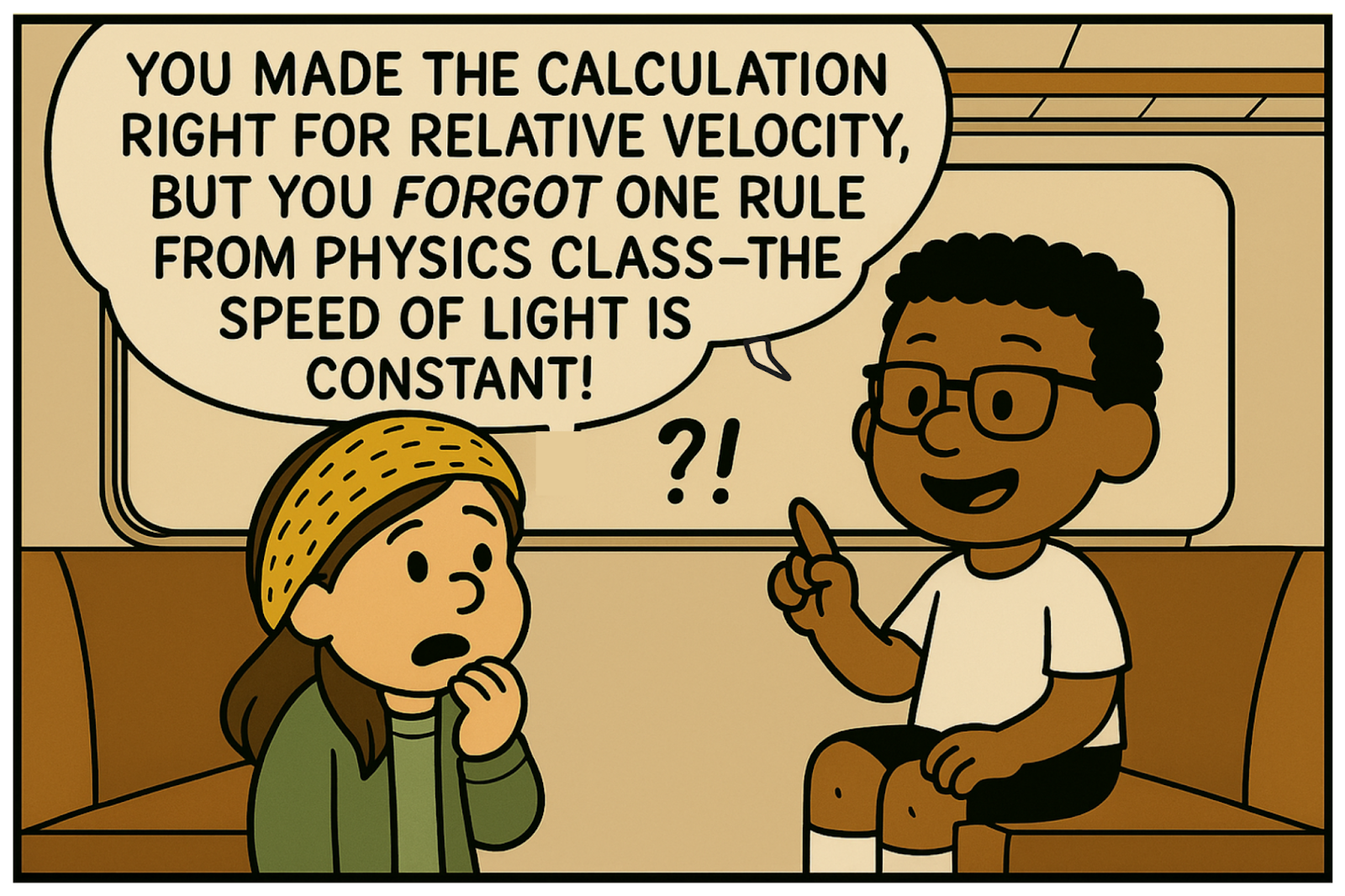
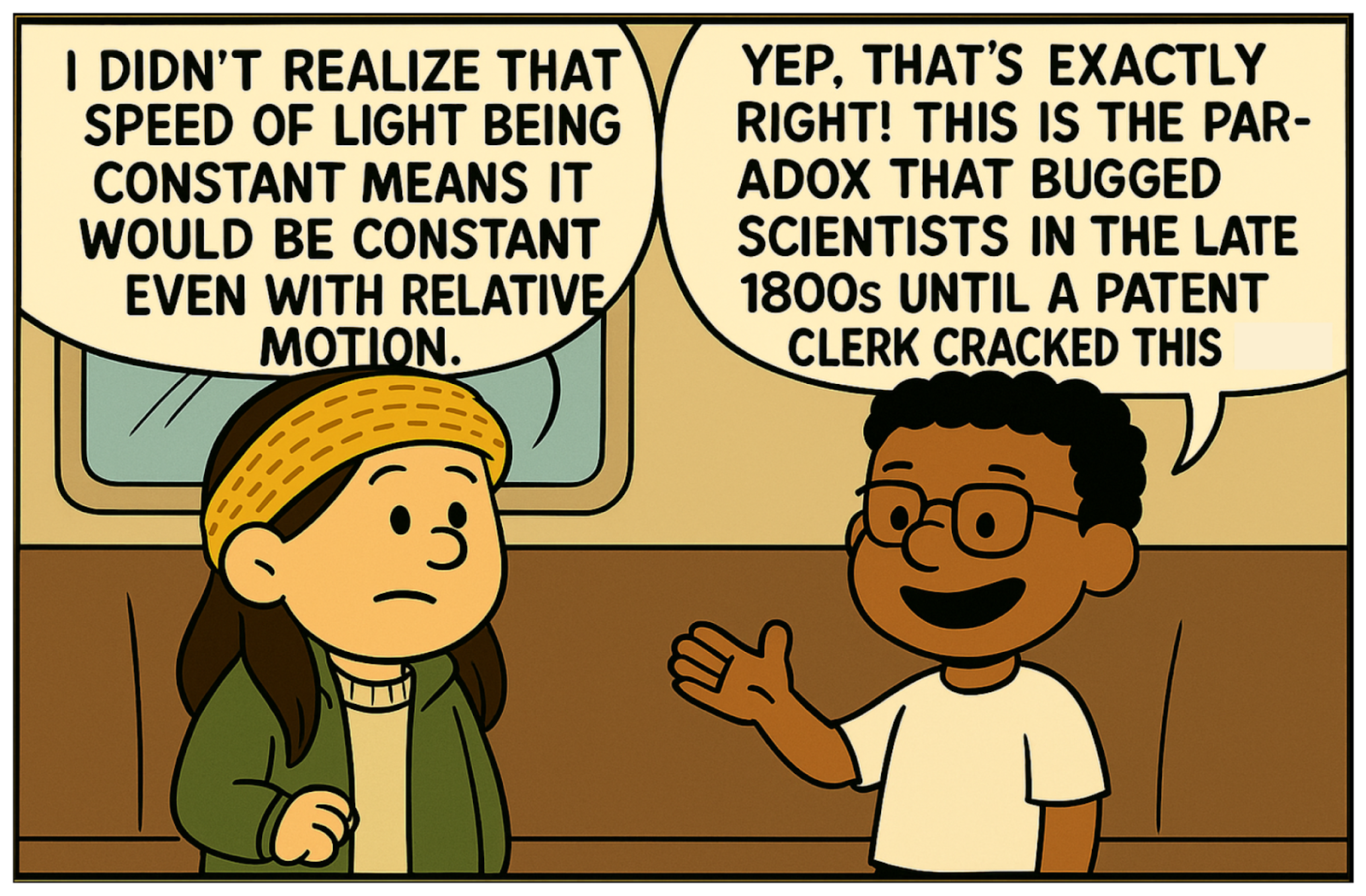
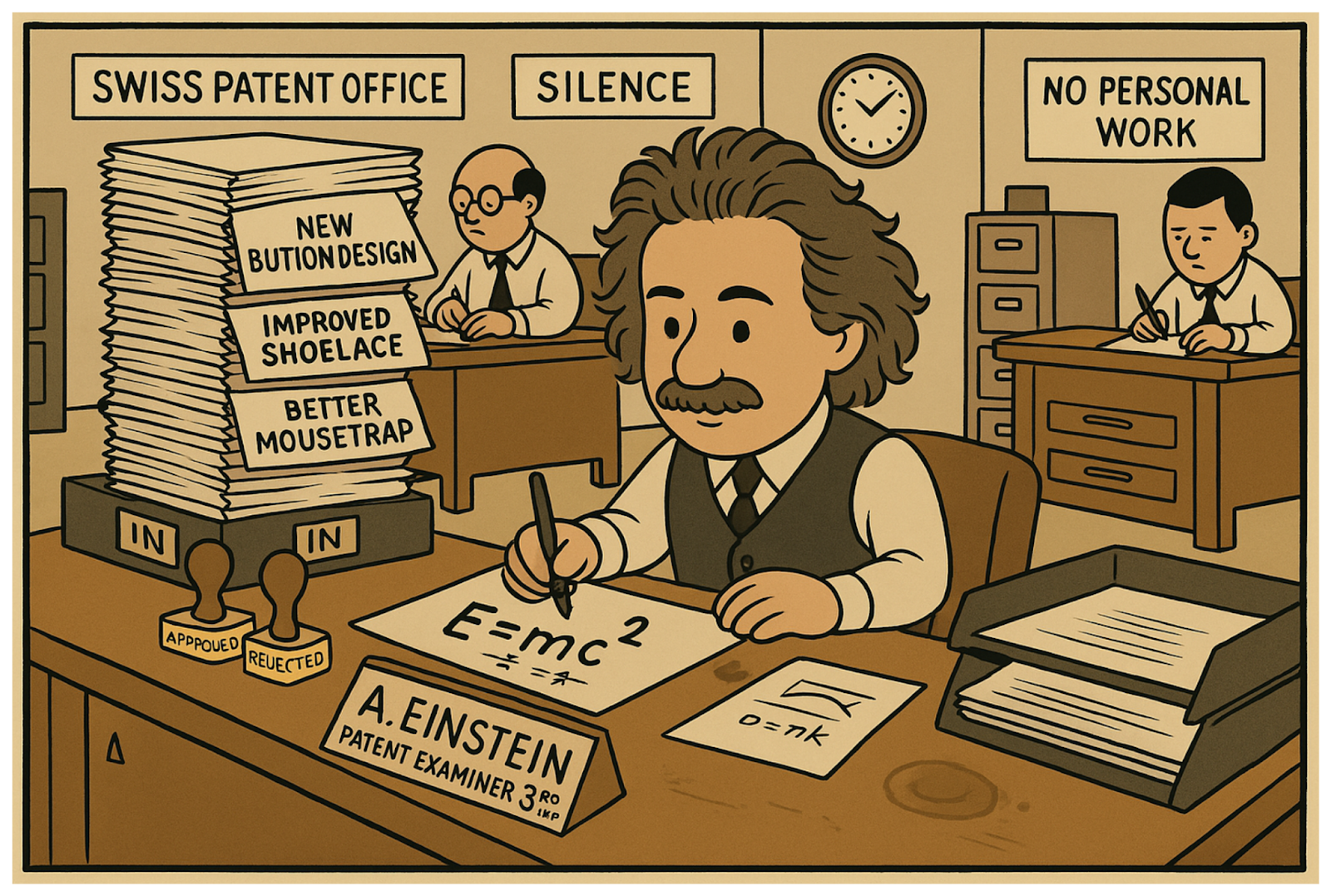
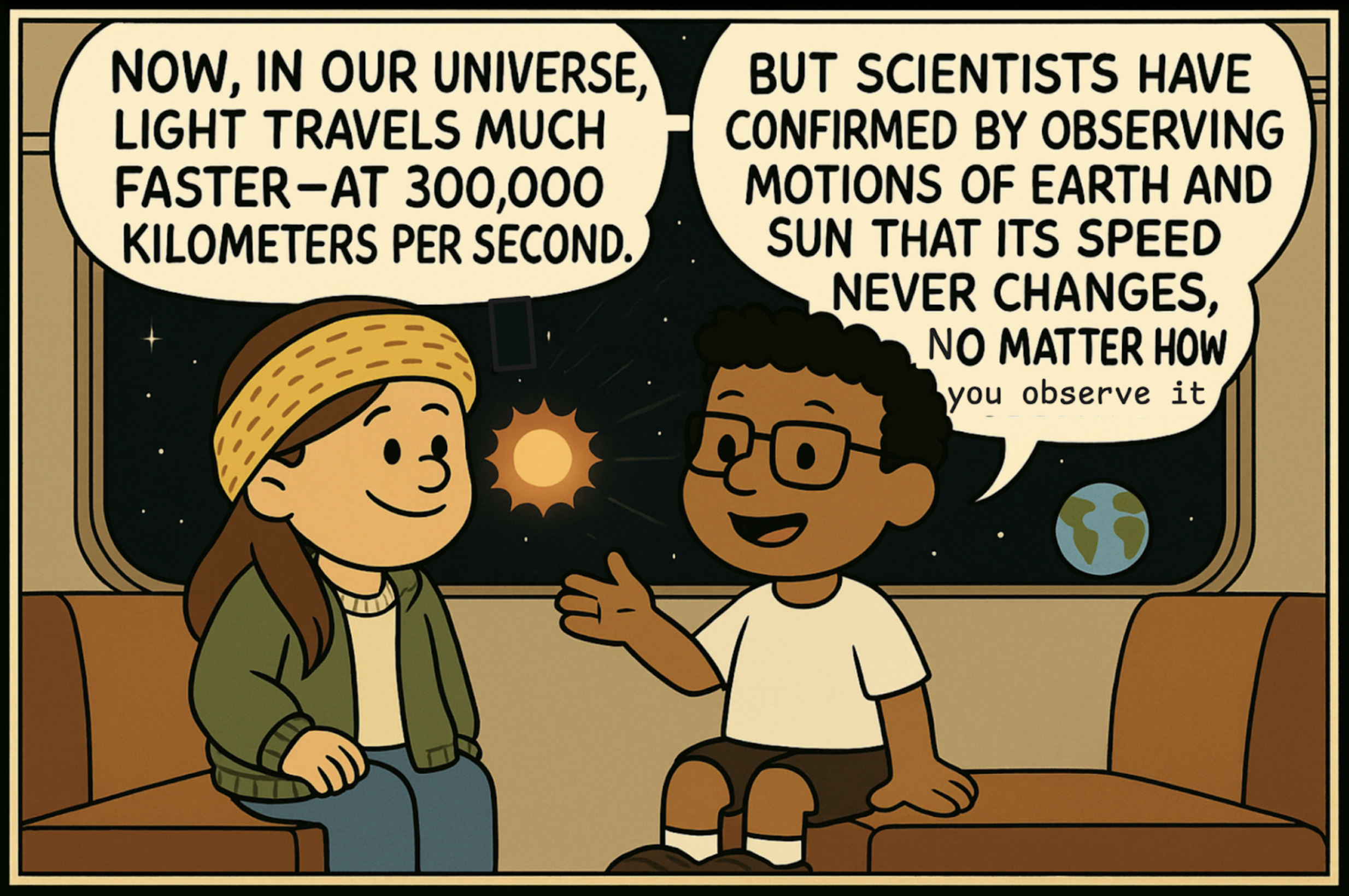
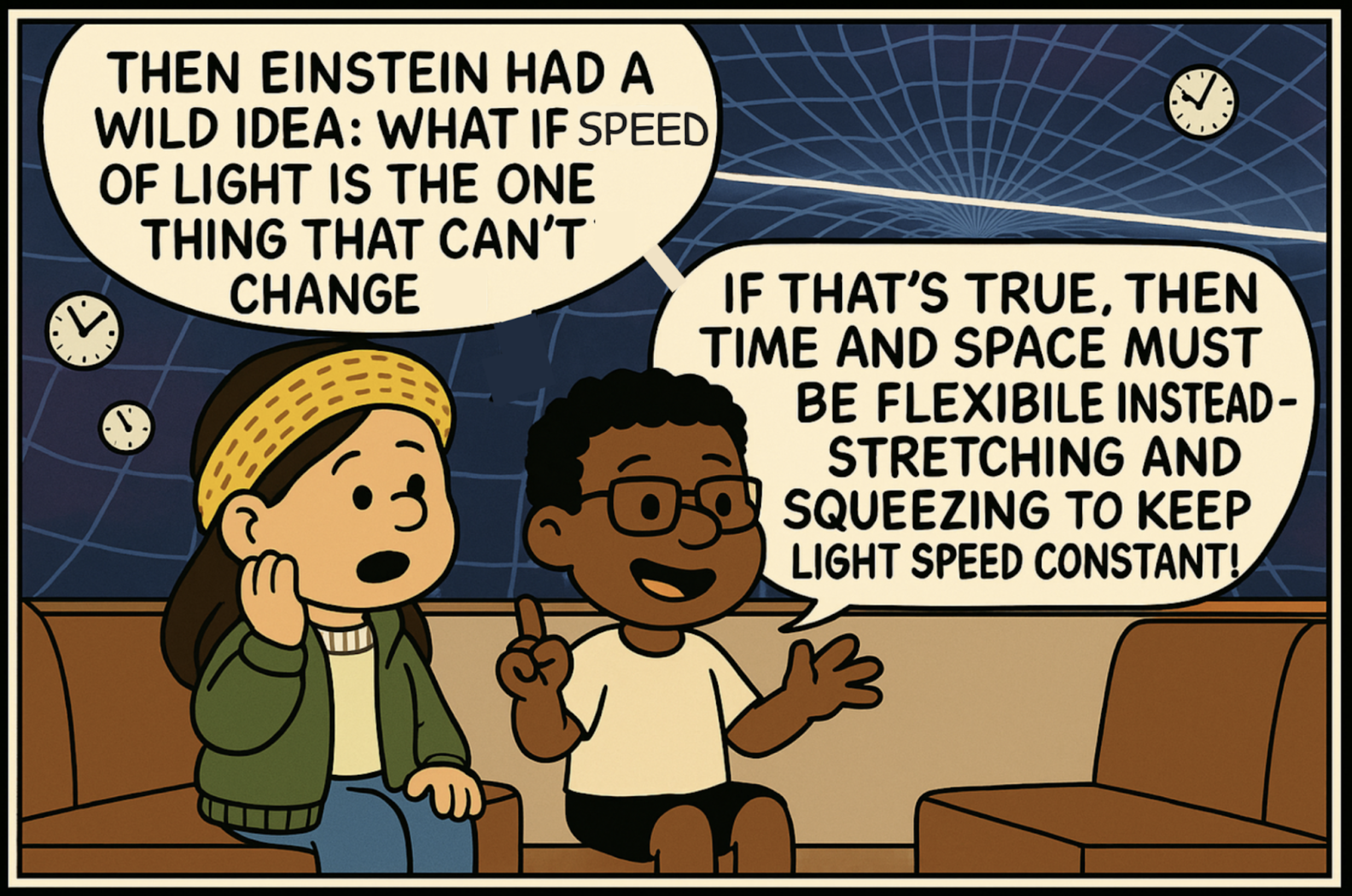


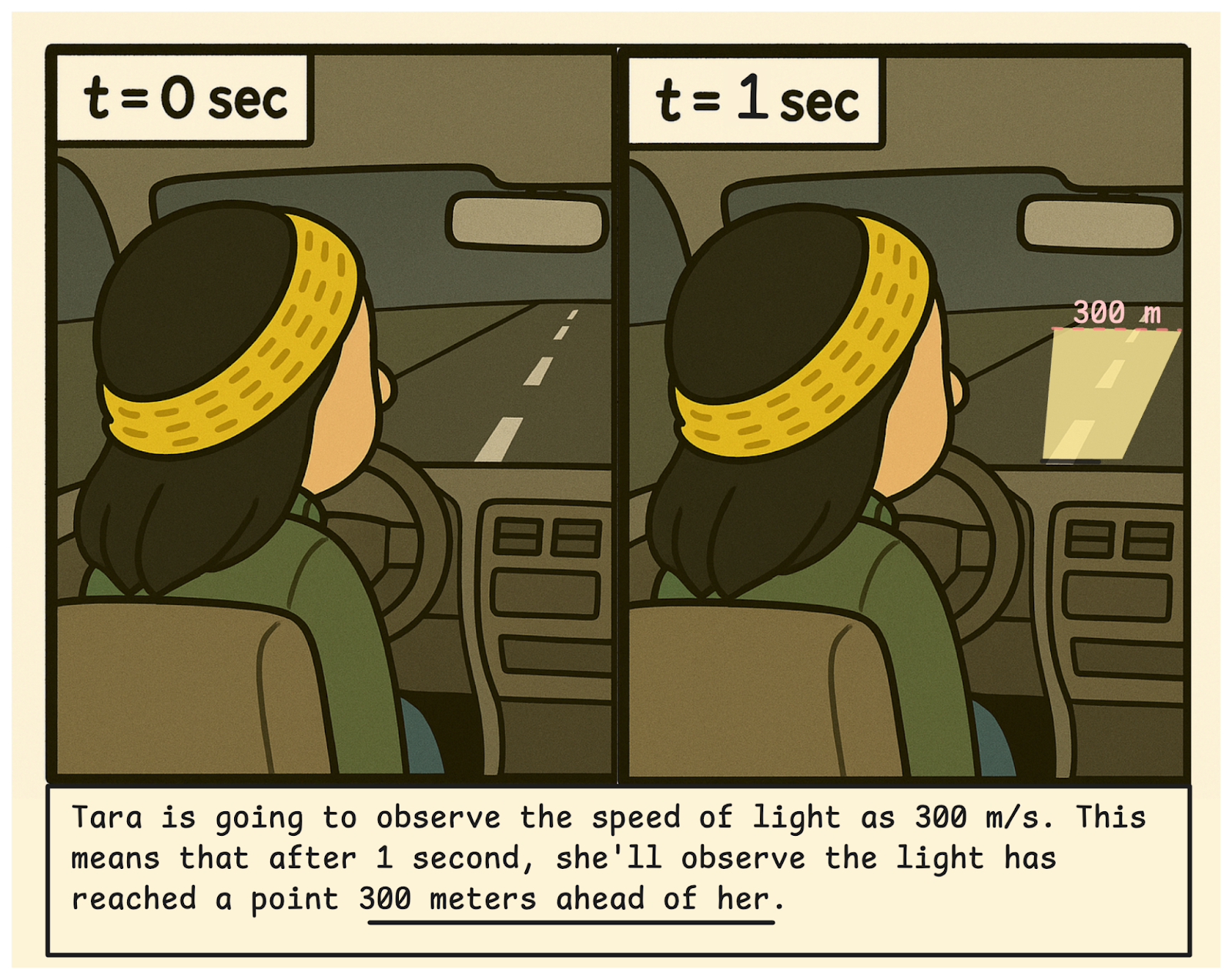
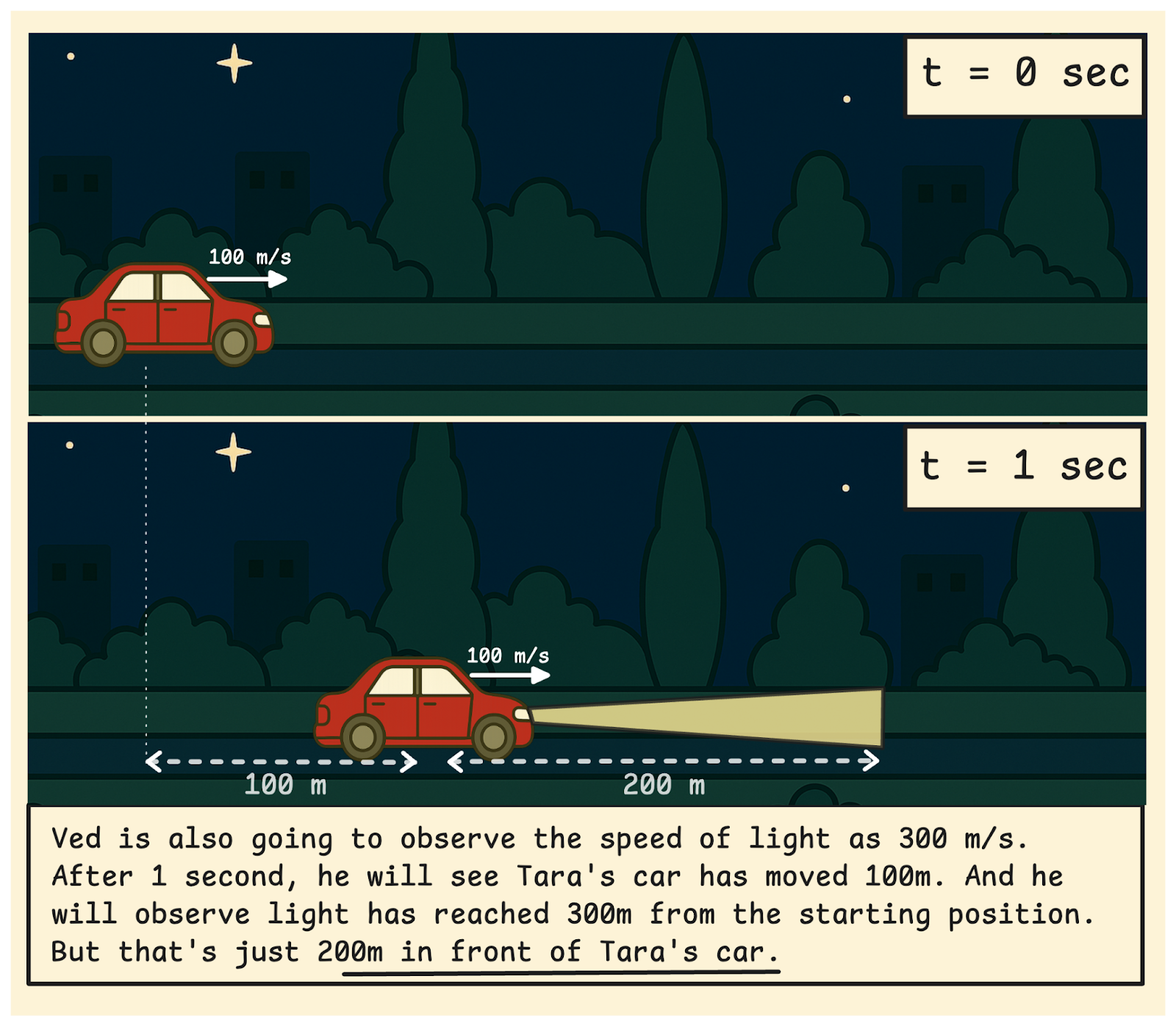
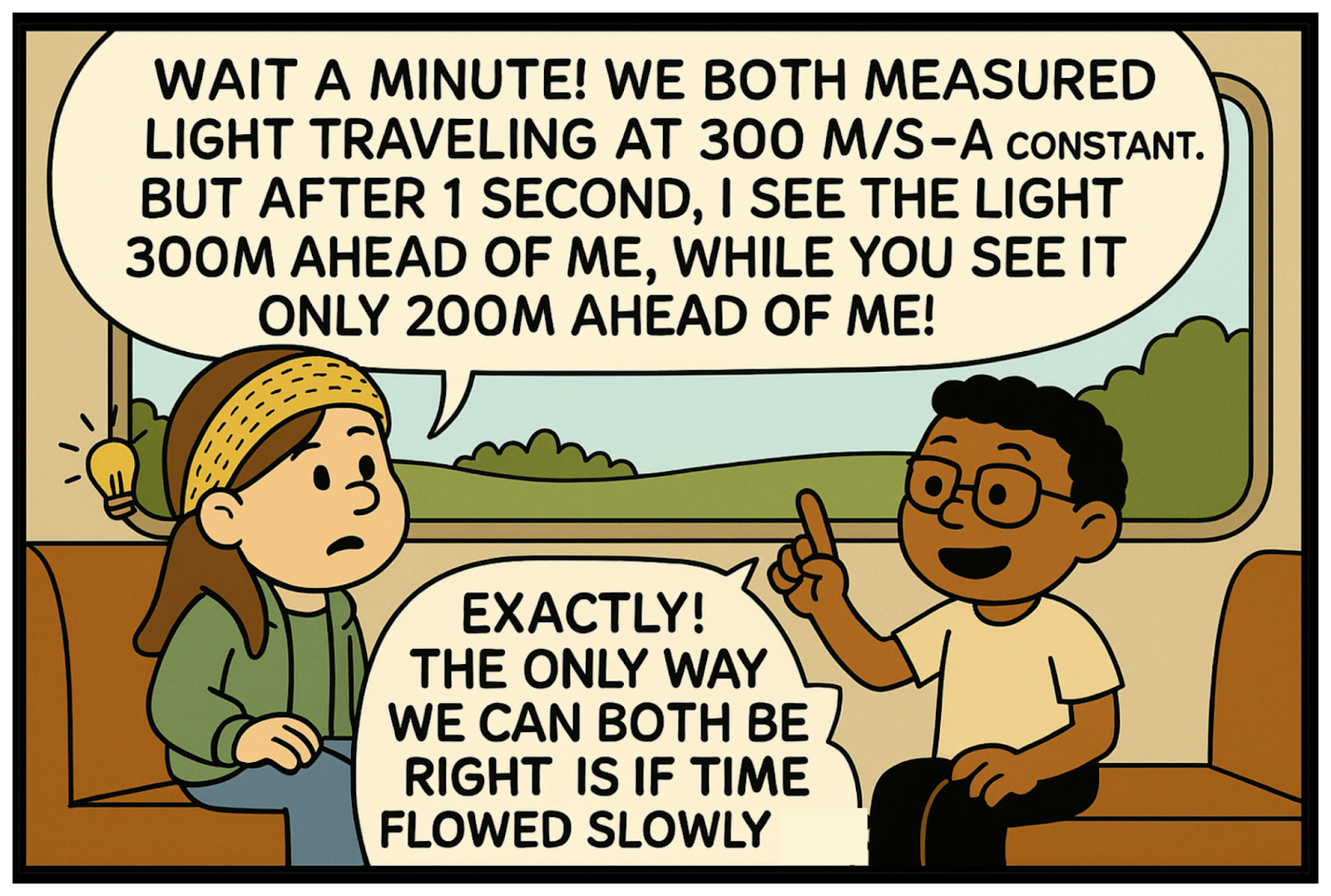
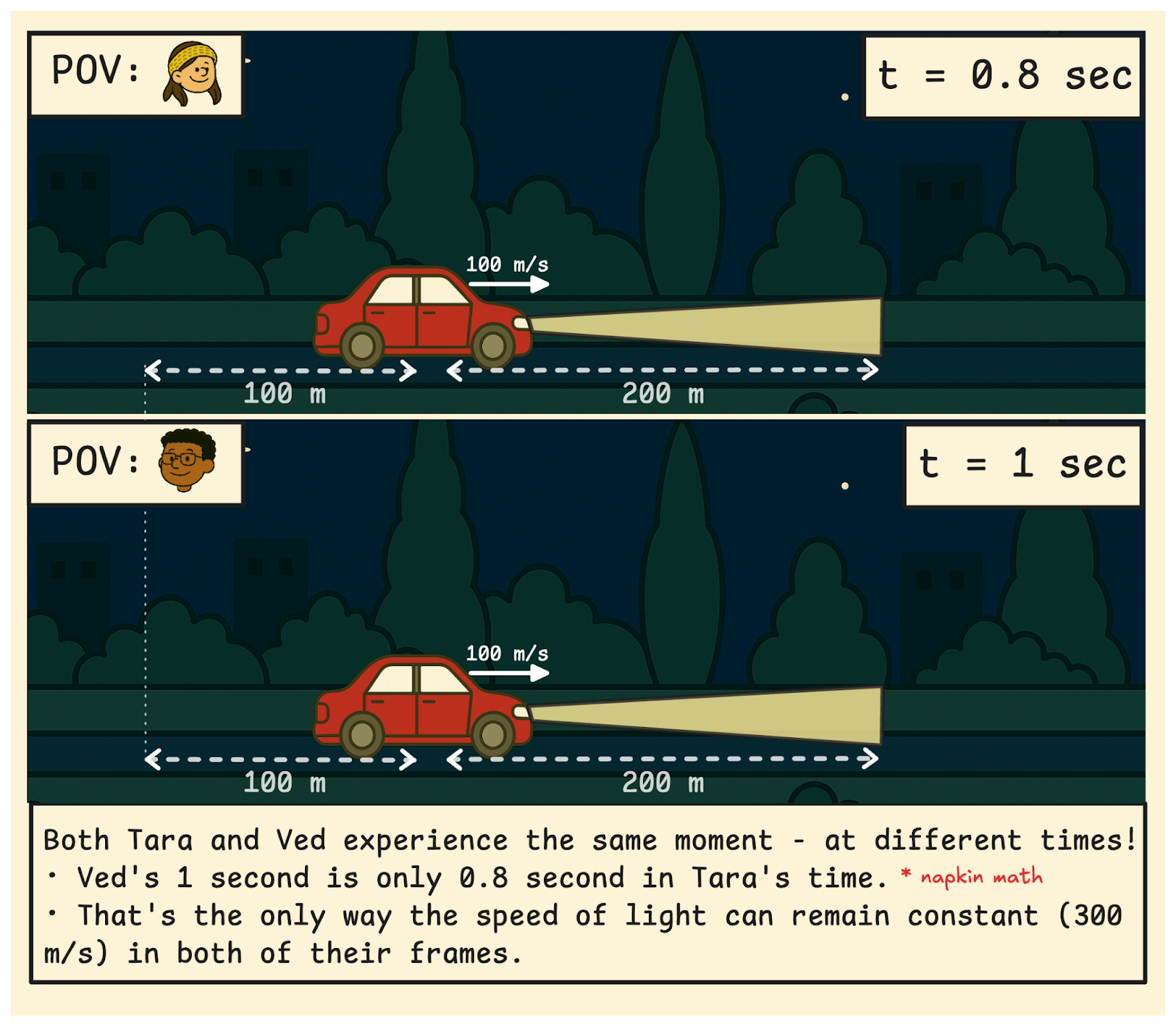







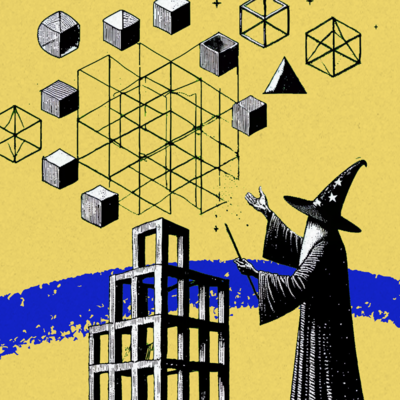
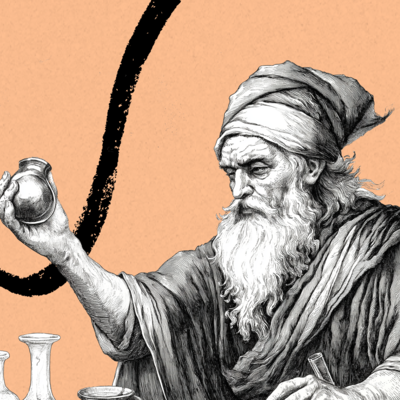

Comments
Don't have an account? Sign up!